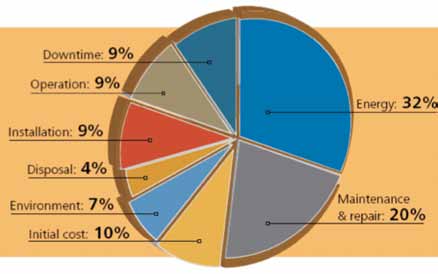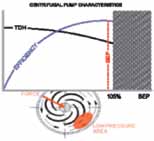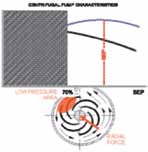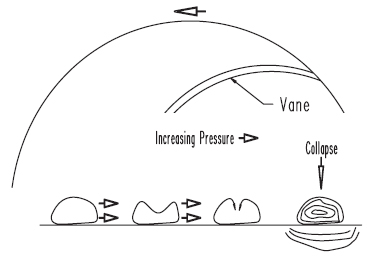Initial purchase price is a small fraction of the TCO.
How much does a pump cost? Ask a corporate executive or plant manager about the cost of a piece of equipment, and you're likely to hear the purchase price. In fact, capital outlay is only a fraction of the total operating expenses for pumps or rotating equipment. Companies that want to compete effectively should carefully measure total costs and analyze them as part of system design and equipment purchase decisions.
Optimizing total cost of ownership (TCO) is a difficult process for organizations to plan and sustain, but the payback is worth the effort. Most organizations that succeed at optimizing TCO have leaders who demand cooperation between functional groups. They recognize that optimizing costs is a function of operations, maintenance and purchasing working toward the common goal of lowering total costs. They also insist on the discipline that is required to always follow proper work processes.
The TCO Formula
TCO analysis is simply a financial estimate of all costs—direct and indirect—of acquiring, commissioning, operating, maintaining and disposing of a product or system for a specified period of time. The analysis can be used to effectively compare alternative approaches. One can understand these costs by using the model below for pumping systems that can be extended to almost any class of manufacturing equipment:
TCO = Ca + Cc + Co + Cm + Cp + Cd
Where:
Ca = Cost of Acquisition—includes the cost of engineering, procurement, equipment cost, auxiliary equipment cost, inspections and documentation.
Cc = Cost of Commissioning—includes the cost of construction, testing, training and technical support
Co = Cost of Operation—includes energy, operating personnel, facility costs, support and handling for raw materials
Cm = Cost of Maintenance—includes maintenance personnel, maintenance facility cost, test equipment, maintenance support and handling cost, maintenance spares and repair parts
Cp = Cost of Production—includes production losses, quality cost, environmental cost and cost of redundancy
Cd = Removal and Disposal Cost—minus any reclamation value
The breakdown in Figure 1 shows pump costs reported by a top 10 global chemical manufacturer. It is interesting to note that initial cost typically represents less than 10 percent of the TCO. Energy and maintenance costs have at least five times more relevance but are rarely considered during the selection process.

Figure 1. Pump costs from a top 10 global chemical manufacturer, FY 2006
The first opportunity to optimize TCO is during the design phase. Specifying the right equipment for the right application is critical to operating efficiently—which lowers the energy, operation and maintenance expenses that comprise more that 60 percent of the TCO.
Many engineers specify oversized pumps, based on the theory that it is better to err on the side of having too much power for the application than too little. If the flow of the system is too high coming from the pump, it can simply be throttled back using a valve on the discharge side. This arrangement increases energy costs for operating the pump, reduces the operating life of the equipment and likely increases downtime.
When a pump is operating optimally—or at its best efficiency point (BEP)—liquid flow is constant and radial forces acting on the impeller are balanced. This allows the pump to experience the highest efficiencies and lowest vibration. If the pump runs off-BEP, it creates an imbalance of pressure inside the pump. Any of these problems can cause shaft deflection and the likelihood of pump failures.
Case Study 1—Too Much Suction Causes Too Many Failures
A large paper manufacturer installed a critical process pump on one of its paper machines. The pump demonstrated high vibration levels from the beginning and mean time between failures (MTBF) was less than nine months. A root cause failure analysis showed that cavitation was the reason for the failures, but the cause of the cavitation was that suction energy in the pump was too high. The ultimate solution was to install a different pump with lower suction energy.
The solution reduced the pump's overall vibration by 89 percent, eliminated the pump cavitation and reduced its energy consumption by approximately 30 percent. The new pump has operated flawlessly for more than five years after the solution was implemented.

Left of BEP: A low flow rate restricts flow and re-circulates fluid through the pump. The resulting higher velocity near the cutwater causes a low-pressure area that increases loads on the impeller, which causes shaft deflection and related stress on the seals and bearings.
Case Study 2—Non-OEM Parts Go up in Smoke
A customer recently purchased lower-cost pump replacement parts—built to non-OEM standards—that caused a major loss in production and inferior performance that increased energy consumption. The application was a typical condensate service, for which the customer used a standard OEM pump. After an above-average time in service, the wet-end components were scheduled to be replaced due to routine wear.
Against the recommendations of the company's maintenance team, the purchasing department chose non-OEM replacement parts based on lowest price. Within a few hours, the pump failed. Maintenance engineers discovered that the non-OEM stuffing box cover bore was undersized and the gland studs were off-center from the bore. The pump was put back into service with a new OEM-supplied stuffing box but still with a non-OEM impeller and casing.
Further analysis revealed that the inefficiency and underperformance of the non-OEM parts generated approximately $7,600 per year in additional energy costs. In addition, the pump had to be pulled out of service for four weeks for troubleshooting and analysis of the defective parts.

Right of BEP: A too-hight flow rate causes pumps to operate at right of BEP, or run-out. This increases exit velocity and creates a low-pressure area that boosts radial loads and can cause shaft deflection, resulting in stress on the seals and bearings.
Managing Inventory
Some manufacturers provide replacement parts that are made to exacting original equipment manufacturer (OEM) specifications for other pump brands. However, lower-cost components that do not meet OEM standards will most likely deliver lower performance characteristics, a virtual guarantee for higher TCO over the life of the equipment.
To verify this point, a comparison of ANSI standard pumps of identical size and non-OEM suppliers was conducted. Performance tests on four sizes of ANSI pumps showed that non-OEM pumps failed to match the OEM pump performance for flow, head and efficiency. (Please see "Not All ANSI Pumps Are Created Equal," Pumps & Systems, October 2010.)
Selecting equipment and parts based solely on purchase price can, over long periods, cause other unintended consequences that inflate TCO. Buying like items from multiple vendors requires operators and maintenance personnel to be trained on each vendor's operating guidelines and procedures. In addition, storerooms must stock parts for each vendor's equipment. This can inflate maintenance, operations and repairs inventory values and tie up precious capital dollars. Focusing on purchase price alone can produce short-sighted decisions, a dynamic that some suppliers understand all too well.

Cavitation: When fluid on the trailing side of the pump impeller is at a lower operating pressure than the pump inlet, cavitation bubbles form, move to areas of higher pressure and collapse. This force causes uneven loading on the impeller vanes, and shaft deflection can occur as a result.
Case Study 3—Parts Problem at a Paper Plant
A paper company with more than 4,000 pumps at five pulp-and-paper facilities tended to buy pumps based on low purchase price. As a result of this approach throughout many years, the company owned more spare items than were necessary to support more than three lines of pumps, with excessive quantities of spares stocked for each item. After a third-party analysis, maintenance and purchasing teams consolidated and standardized the pumps and parts. The change resulted in inventory-value and inventory-handling cost reductions of more than $120,000 per location with minimal implementation costs.
Ensuring Quality Repairs
Pumps repaired in companies' internal shops commonly fail prematurely, based on the fact that workers seldom follow OEM standards to perform the work and often fail to adequately assess the quality of their work. This is generally attributed to skill level but can be directly dependent on the environment in which the repairs are made. Making repairs per OEM specifications to like-new condition can contribute to improved performance. Typically, the cost of repair alone is five to 15 times more than the cost of the effort that would have prevented the failure.
Case Study 4—Oil Refinery Reforms Bad Actors
Analysis of the work history at an oil refinery revealed 30 bad-actor pumps that had an average MTBF of less than one year. Root cause failure analysis on these pumps revealed a range of issues, including improper lubrication, inadequate maintenance procedures, incorrect equipment selection, insufficient operating procedures and improper control methods. Over a two-year period while these issues were being resolved, the average MTBF more than tripled, repair costs were reduced by more than 75 percent and emissions were reduced by 95 percent.
Role of Operations and Maintenance in Managing TCO
Many business leaders believe that the maintenance department alone can deliver reliability to the operation and, by doing so, will contribute most significantly to TCO improvements. While maintenance is a necessary component, optimizing TCO must be an organization-wide initiative, established by the deployment of disciplined and integrated processes and practices. To create a proactive maintenance culture and achieve reliability, it is imperative that operating parameters be well-defined and documented via standard operating procedures and that operators are effectively trained to follow them.
TCO Analysis—a Leadership Tool
TCO analysis by itself will not solve many problems. Leaders who continuously strive to improve performance are needed, supported by workers and managers who are willing to change their behavior and embrace new, more efficient ways of doing things. Organizations that do this well tend to be industry leaders with higher productivity and profitability than their competitors. However, the four case studies in this article do not all match that description. They demonstrate that every effort to analyze and optimize TCO, instead of acquisition costs alone, is likely to yield a positive return on investment.
Pumps & Systems, August 2011

